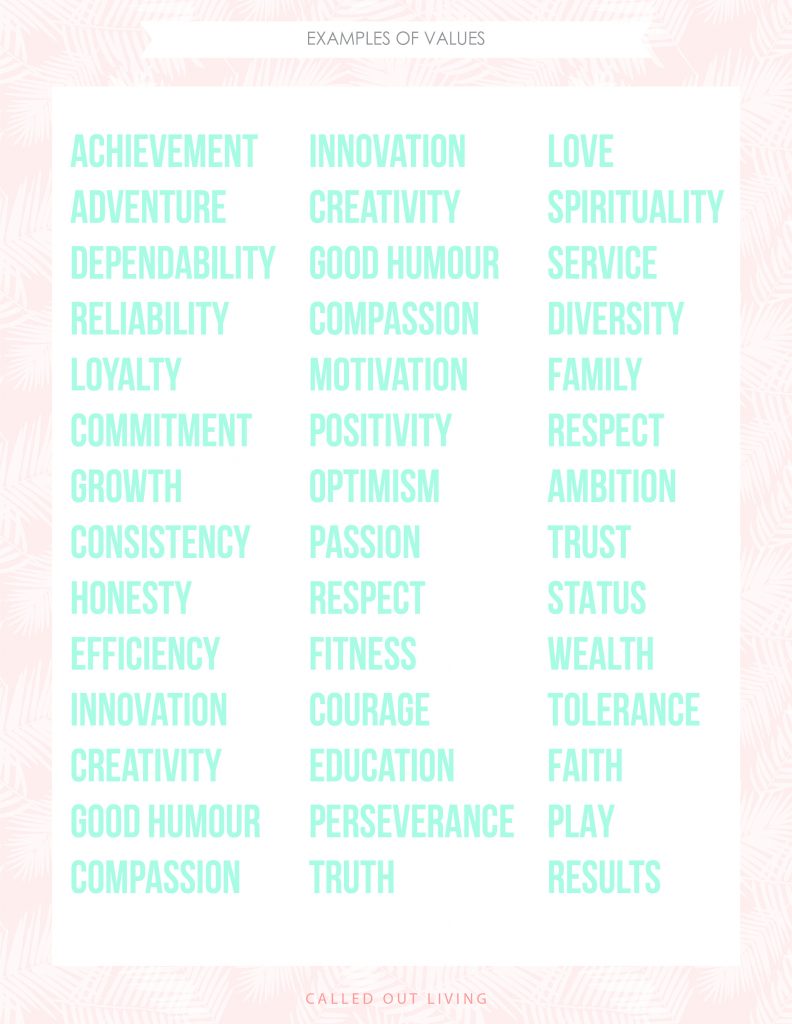7 tips to get unstuck & take control of your life
7 Steps to get unstuck & take control of your life
Have you been feeling stuck, stale and frustrated?
That exhausting sense that life is an endless hamster wheel, wake, work, chores, sleep, repeat.
You used to have big dreams for your life and they’ve been left at the wayside. All you can think of is what’s next on your chores list.
Life is happening to you, you’re living on autopilot and have lost your sense of direction and purpose.
There’s GOT to be MORE you think to yourself.
Well there totally is!
Here’s a 7 step guide to get unstuck and start taking control of your life.
1. Dream Big
Do you have a clear vision of your future? Where do you want to be 1, 5 or 10 years from now?
It’s so important to have a dream for how your future could be. Without a dream or a vision of your future it easy to get caught up in the day to day and give no attention or intention to your future. Earl Nightingale called this “drifting”. Without a dream or a vision most women find they lack direction or something to head towards. Without vision it’s easy to just drift along, letting life happen to you.
Having your own clear vision or dream for your future means that you start to shape it they way you’d like. It helps you define success for yourself and not get caught up in someone else’s expectations for your life.
So, let’s start with a dream. Start with the end in mind. Fast forward and picture yourself as elderly person, consider what you’d love your life to have been like. What places would you visit, how did you spend your days, what work did you do, how did you feel about this work? what impact did you make on others? How did you live out your values?
Take a big piece of paper and write out different areas of life like ‘relationships’, finances, social justice – what ever is important to you. Let your mind run free and write down anything and everything that comes to mind that you’re interested in or would like to experience. Don’t self-censor by only writing what you perceive to be achievable. Let your mind think and dream big.
In the Life Planner & Dream Life Planner we have included an exercise where you write a letter to your younger self. One letter is written from the point of view of having defined your goals and taken action, the other letter you write about how your life turned out because you didn’t. It’s very effective as it really becomes personal and emotional. Really picture each alternative in your imagination, feel the feelings, feel the emotion of the consequences of taking action and the negative ones of not taking action.

2. Get crystal clear
After taking some time to dream freely about what your future could like get more clarity by looking at your life as it currently is. This exercise is based on Hal El Rod’s miracle morning. It’s called the level 10 life. Decide on 10 areas you’d like to evaluate and track – common ones are mind, body, soul, love, people, fun, giving, work/school, my environment, money. Draw a circle with 9 other circle inside it, then divide the circle into 10. Rate between 1-10 how satisfied you are in each of these 10 areas. You can then review and rate this as often as you’d like on a graph.
Make notes on what comes up, what you’re happy with, what you’re not. What you want more of, what you want less of.
In tangent with looking at your dream life, rating your current situation it’s so important to consider and define your values. Values will help and guide and shape your decisions in life. If you value safety then it wouldn’t bring peace to leave a job to start a new business. Instead you’d start it while you’re still working and only leave once you were making enough. Perhaps you do value financial stability, then contracting may not be right for you and a steady job may bring more peace.
Here’s a list of values to get you thinking.


3. Reverse engineer
Take all these ideas you’ve mind mapped and brain stormed and start to put them together in a more precise way.
Get another piece of paper and write out how you imagine your dream day to be like. This can be far in the future or 1 year, 5 years from now. It’s a good idea to start with one in the far future because the further down the road you can see, the more focus you’ll have early on in plotting out your path to that life. Don’t forget you can always and should adapt and pivot from your life roadmap.
Consider things like how you wake up, what you do first thing in the morning, who are you with, what work do you do, what value do you bring your community local and global, what do you eat? What do you do for fun or relaxation.
We cover this in the Life Planner over 7 pages that really dive into creating a vision for your dream life.
Now you’ve got a clear picture of what you’d like your life to look like, what your values are and how you feel about life currently. The next step is reverse engineer this. This simply means to work backwards from your desired end point and plot out what steps are needed to get there. Consider the skills needed, expertise you need to acquire or relationship that need to be developed to help you achieve each step.
You can also make a vision board which is a visual representation of these ideas. This blog post shares more about them and how to create a digital one on canva.com.
4. Get SMART
Now that you have the end in mind, have written down some rough milestones as you reverse engineered your chosen outcome we can build a bit more structure around them. This is where
S.M.A.R.T goal come in! It stands for specific, measurable, achievable, Relevant and timely/time bound.
Specific – Frame that goal, what exactly do you ant to achieve? Instead of ‘Get healthy’ It would be get healthy by losing 30 lbs of weight and excursing for 20 minutes 4 times a week.
Measurable – How will you measure this, put a figure or quantitate it.
I want to lose 30 lbs over 6 months.
Achievable – Is this something you can do? Can you accomplish this with your time or financial constraints?
Relevant – Is this actually a goal you want to achieve or one you ‘think’ you do? Be honest and consider your values and your ideal outcome, does this goal fit? You can think relevant as what’s my reason why, what is my motivation? Why is this important? If you can write down 3-6 reasons why for each goal you are more likely to reach them.
Example: I want to get healthy and lose weight and move more because it will help reduce the pressure on my joints and ease my health symptoms.
Time bound – Give yourself a deadline, is it a short term goal or long term? Choose if it’s a week, month, year or more.
5. Take Inspired Action
Writing and defining your goals is great but without action what’s the point?! You’ve got to actually do something! I love Scott Voelker’s tagline of ‘You’ve got, you’ve got to, take action!
You want to make sure that the action you take will make has an impact and produces results. Sometimes that will take experimenting. You’re going to break down your goal into milestones or action steps. Try to think of around 2-4 main ones. For each goal try and think of one action step that when achieved will knock out the need for other goals, or ticks off a few things at once. For each action step break it down further into 3-5 tasks.
Plot these milestones out and schedule in roughly where the smaller tasks fit in. It’s a great idea to do 90 days or quarterly goals and work on a 90 day framework. A year can seem too far off, its easy to let tasks take the whole year. Often tasks expand to the time frame given. 90 days goals also add a sense of urgency and when you achieve in a quicker time frame it builds confidence and momentum.
The quarterly planner is design especially for this purpose. It can also be found in the Life Planner bundle.
Now you’ve done all that it will so much easier to plan out your month or week! Each week and month should have one priority goal. Keep things focused for momentum. Work on around no more than 3 goals at a time to reduce overwhelm. Focused and inspired action will get you quicker results than being distracted over 10 various goals.

6. CHECK IN
Frequently check in with your progress. Check in with how you’re feeling about the goals. Do you still want to pursue them? Has your life situation changed so the goal needs adapting? Have a weekly, monthly, quarterly and annual review.
You can look at your progress at these reviews. Consider what worked, what didn’t? What did you enjoy, what sucked your energy. Can you outsource this to someone else? Do you need to develop your skills to reach the next stage?
If things didn’t work out, can you pinpoint why? What can you change to overcome this?
Regularly checking in with your progress means you’ll stay more focused and less likely to drift of path.

7. Mind, body, soul
Last but not least is taking care of your mind, body & soul. These things should be considered when you create your dream life and goals. Research shows that having some sort of spiritual practise helps people feel happier, more fulfilled and less stressed. Each day try to do things that will take of each of these. This is also called self care. This blog post covers how to start a self care routine.
Some things to consider are daily habits. Habits help make it easier to develop positive behaviours. These behaviours can add to your sense of wellbeing as well as helping you with goal setting.
A lot of successful people have morning and evening routines that cover things like reading, time of quite/prayer or reflection, exercise and gratitude. The Life planner has 2 pages to plot out your ideal morning and evening routine. The daily and weekly planner also include space for 3 things you’re grateful for. You could always keep a little notebook just for recording things you’re grateful for.
One of the most important things in getting unstuck and taking control of your life is mindset. Developing a growth mindset is imperative to your success. You may set out goals, make them S.M.A.R.T ones but still fail to achieve them. Usually this is more about what’s going on in your mind than your ability. IF we feel we can’t achieve those goals we may self sabotage. Some sabotaging behaviour are procrastinating, focusing our time on unimportant things like website colours, not doing a task properly or rushing it.
Reflection time can help you see when you’ve gotten in your own way. Perhaps you suffer from anxiety and are letting those uncomfortable feelings stop you. There are many ways to start to overcome limiting beliefs such as counselling, Cognitive behavioural therapy, getting a life coach, coaching yourself by reading mindset books, trying out new things and documenting it.
The life planner includes some fear setting sheets in which you write down a situation you’re worrying about and then digging into what you’re really scared of. Looking at these worse case scenarios you can create some action plans on how to fix the situation. Also write down a best case scenario and write down what amazing things could happen! This will help you to work through your anxiety and start to take action.
Another great idea to keep a success or flourish log where you write down things that went well, compliments your receive, a situation that turned out better than you thought. In most cases everything turns out fine or even quite well!
